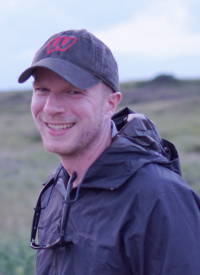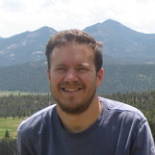In recent years, the number of heavy rainfall incidents has increased. What was once considered a 100-year storm is now a frequent occurrence. As such, many cities are looking to better understand extreme rainfall statistics in an effort to prepare their infrastructure and plans for this new normal.

To aid in these efforts co-collaborators Daniel Wright, an assistant professor of Civil and Environmental Engineering and a Nelson Institute affiliate, and David Lorenz, an associate scientist with the Nelson Institute Center for Climatic Research plan to provide updated rainfall statistics and develop an infrastructure resiliency community of practice as a part of a two-year Baldwin Wisconsin Idea Endowment initiative.
A prestigious endowment established to fund projects that foster public engagement and the advancement of the Wisconsin Idea, the grant was awarded to Wright and Lorenz for their project titled, The Wisconsin Rainfall Project: Enhancing Infrastructure Resiliency to Extreme Rainfall in Wisconsin and Beyond. Together with support from the Wisconsin Department of Natural Resources, this funding will allow Wright and Lorenz to complete three major goals.
First, they plan to utilize the RainyDay software developed by Wright to generate up-to-date extreme rainfall statistics quickly and at low cost. Second, they will use a method developed by Lorenz to create rainfall statistics that reflect future climate conditions in the state. Third, they will develop a community of practice of engineers and planners via the Wisconsin Initiative on Climate Change Impacts (WICCI) Infrastructure Working Group, which is chaired by Robert Montgomery, who is a Professor of Practice in Civil and Environmental Engineering, a Madison-area engineering consultant, and a collaborator on the proposal.
This community will aid Wright, Lorenz, and Montgomery in determining the best way to communicate and share the updated rainfall statistics with cities and planners, as well as help identify directions for future work.
“I’m happy to have the opportunity to take the science we’ve been working on and put it into practice,” said Wright. “We have a strong background in rainfall analysis and the science is shovel ready, but most agencies don’t generally fund application work. The Baldwin Grant gives us the opportunity to take the science and actually put it into practice.”

Lorenz echoed this, stating that, “It’s hard to get funding for applied science, especially as it relates to the downscaling we want to do as a part of this project. So, the Baldwin Grant is going to allow us to do more work to improve our understanding.”
Downscaling refers to a methodology that uses large scale information to make predictions at a local scale. Lorenz has developed the UW Probabilistic Downscaling approach which will allow the team to generate extreme storm statistics for the years 2050 and 2100 at a local level. All of this data and more will be shared via a web-based mapping interface built as a part of the project.
“We plan to use this project to generate statistics throughout Wisconsin with the caveat that these are not forecasts, but rather the likelihood of major storms occurring over the lifespan of infrastructure,” said Wright. “Through this we will demonstrate the usefulness of this information which can help leaders to manage the risks and costs of rainfall events.”
While the data is key, Wright also stated that the WICCI team and collaboration with city planners and engineers will be essential to the success of this project.
“We can’t do this in isolation,” said Wright. “We are looking forward to working with the community of practice to determine how to use the data more effectively to plan ahead.”
As a part of the community of practice goals, Wright and Lorenz hope to develop and implement a state-level outreach strategy, create plans to promote infrastructure resilience, and explore opportunities to expand efforts to the national level.
Over the next two years, the team will seek to build robust extreme rainfall statistics to support current and future engineering practice and planning, establish a self-sustaining state-wide community of practice, and increase the visibility nationwide of UW-Madison and WICCI.
Lorenz said, “We are looking forward to working on this and believe this grant will be a great jumping off point for future work.”